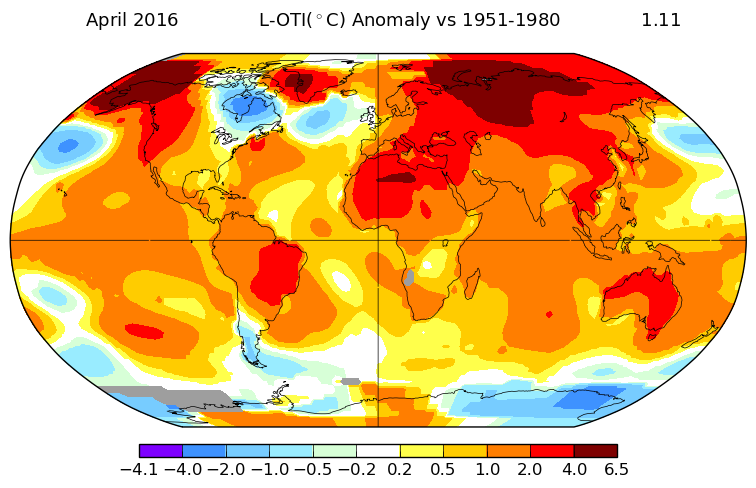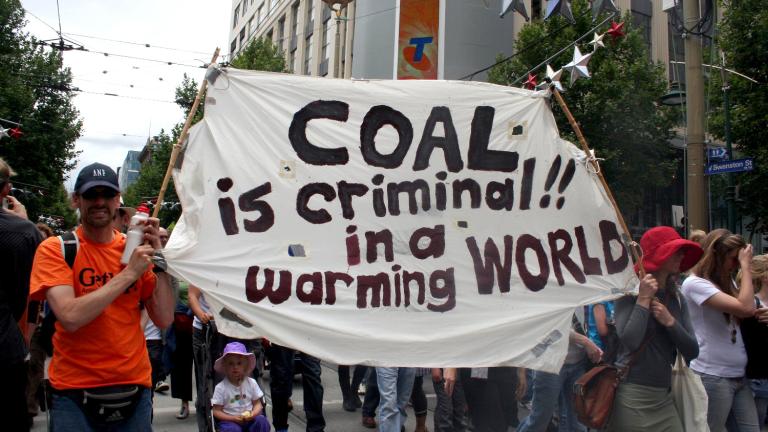This story was originally published by Slate and is reproduced here as part of the Climate Desk collaboration.
N.B. If this article sounds familiar, it should. This has been happening so frequently I just copied the post for March and updated it.
October. November. December. January. February. March. And now April.
For the sixth seventh month in a row, we’ve had a month that has broken the global high temperature record. And not just broken it, but shattered it, blasting through it like the previous record wasn’t even there.

No human alive has seen a month of March April like this before.NASA GISS
According to NASA’s Goddard Institute for Space Studies, March April 2016 was the hottest March April on record, going back 136 years. It was a staggering 1.28 degrees C 1.11 degrees C above average across the planet.* The previous March April record, from 2010, was 0.92 degrees C 0.87 degrees C above average. This year took a huge jump over that.
Welcome to the new normal, and our new world.
As you can see from the map above, much of this incredible heat spike is located in the extreme northern latitudes. That is not good; it’s this region that’s most fragile to heating. Temperatures soaring to 7 degrees C or more above normal means more ice melting, a longer melting season, loss of thinner ice, loss of longer-term ice, and most alarmingly the dumping of billions of tons of fresh water into the saltier ocean which can and will disrupt the Earth’s ability to move that heat around.
What’s going on? El Niño might be the obvious culprit, but in fact it’s only contributing a small amount of overall warming to the globe, probably around 0.1 degrees C or so. That’s not nearly enough to account for this. It’s almost certain that even without El Niño, we’d be experiencing record heat.
Most likely there is a confluence of events going on to produce this huge spike in temperature — latent heat in the Pacific waters, wind patterns distributing it, and more.

The Japanese Meteorological Agency measured similar temperatures as GISS (though it uses a different baseline for the average). Note the trend. See a “pause”? I don’t.Japanese Meteorological Agency
And underlying it all, stoking the fire, is us. Humans. Climate scientists — experts who have devoted their lives to studying and understanding how this all works — agree to an extraordinary degree that humans are responsible for the heating of our planet.
That’s why we’re seeing so many records lately; El Niño might produce a spike, but that spike is sitting on top of an upward trend, the physical manifestation of human induced global warming, driven mostly by our dumping 40 billion tons of carbon dioxide into the air every year.
Until our politicians recognize that this is a threat, and a very serious one, things are unlikely to change much. And the way I see it, the only way to get our politicians to recognize that is to change the politicians we have in office.
That’s a new world we need, and one I sincerely hope we make happen.
*GISS uses the temperatures from 1951–1980 to calculate the average. The Japanese Meteorological Agency uses 1981–2010, which gives different anomaly numbers, but the trend remains the same. Realistically, the range GISS uses is better; by 1981 global warming was already causing average temperatures to rise.



